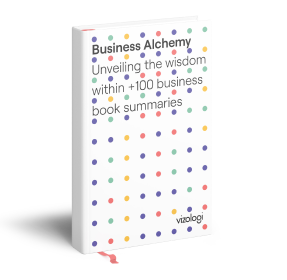Why Reynolds American's Business Model is so successful?
Get all the answers 
Reynolds American’s Company Overview
Reynolds American Inc. (RAI), established on January 2, 2004, operates as a prominent holding company in the tobacco industry, comprising several specialized segments. These segments include RJR Tobacco, which is responsible for the primary operations of R. J. Reynolds Tobacco Company, one of the leading tobacco manufacturers in the United States. Additionally, the Santa Fe segment manages the operations of Santa Fe Natural Tobacco Company, Inc., known for its premium natural tobacco products. The American Snuff segment oversees American Snuff Company, LLC, a key player in the moist snuff tobacco market. Reynolds American's diverse portfolio is complemented by subsidiaries such as R. J. Reynolds Vapor Company, which pioneers innovation in the vapor product category, and Niconovum USA, Inc. and Niconovum AB, which focus on nicotine replacement products.
Reynolds American melds traditional and modern business models to maintain its competitive advantage and broad market reach. The company leverages a combination of product innovation, brand loyalty, and strategic acquisitions to reinforce its presence in the highly regulated tobacco and nicotine product markets. By diversifying its product range from traditional cigarettes to modern vapor and nicotine replacement products, RAI not only addresses changing consumer preferences but also navigates stringent regulatory landscapes effectively. This unique business model allows Reynolds American to sustain legacy brands while aggressively pursuing growth through cutting-edge alternatives and premium natural tobacco products.
The revenue model of Reynolds American is robust and multifaceted, ensuring consistent profitability and market resilience. Primarily, the company generates substantial income from the sale of its wide array of tobacco products, including cigarettes, moist snuff, vapor products, and nicotine gums. These products are distributed through a vast network of retail outlets and direct channels, catering to both traditional and evolving customer bases. Additionally, Reynolds American capitalizes on premium pricing strategies for its natural and innovative tobacco lines, securing higher margins. Through strategic pricing, diverse product offerings, and continuous market expansion, Reynolds American ensures a steady and lucrative revenue stream, positioning itself as a formidable entity in the global tobacco industry.
Headquater: Winston-Salem, north Carolina, US
Foundations date: 2004
Company Type: Public
Sector: Consumer Goods
Category: Manufacturing
Digital Maturity: Conservative
Reynolds American’s Related Competitors
Philip Morris International Business Model
JUUL Labs Business Model
Freitag Business Model
Reynolds American’s Business Model Canvas
- Altria Group
- British American Tobacco
- Philip Morris International
- Tobacco Farmers
- Retail Distributors
- Wholesalers
- Packaging Suppliers
- Advertising Agencies
- Regulatory Bodies
- Research Institutions
- Logistics Providers
- Technology Providers
- Public Health Organizations
- Tobacco product manufacturing
- Product research and development
- Marketing and brand management
- Compliance and regulatory affairs
- Quality control and assurance
- Distribution and supply chain management
- Customer relationship management
- Corporate social responsibility initiatives
- Innovation in new product segments
- Strategic partnerships and collaborations
- Tobacco manufacturing facilities
- Research and development labs
- Product inventory
- Intellectual property and patents
- Experienced workforce
- Distribution network
- Regulatory compliance capabilities
- Financial capital
- Supplier relationships
- Brand equity
- Marketing and sales tools
- Customer data and insights
- Corporate headquarters
- High-quality tobacco products
- Market-leading innovation
- Customer satisfaction focus
- Diverse product portfolio
- Commitment to sustainability
- Advanced research and development
- Consumer-centric brand experiences
- Enhanced product quality
- Competitive pricing
- Responsibly sourced materials
- Customer support
- Loyalty programs
- Direct communication
- Personalized service
- Feedback surveys
- Community engagement
- Social media interaction
- Customer education
- Regular updates
- Customer appreciation gestures
- Tobacco consumers
- Nicotine product users
- E-cigarette users
- Local retailers
- Convenience stores
- Wholesale distributors
- Health-conscious consumers seeking reduced-risk products
- Technologically savvy users looking for advanced nicotine delivery
- Smokers transitioning to vaping or alternative nicotine products
- Healthcare providers seeking smoking cessation tools
- Website (www.reynoldsamerican.com)
- Social Media Platforms (Facebook, Twitter, Instagram, LinkedIn)
- Retail Outlets
- Distributor Partnerships
- Wholesale Networks
- Email Marketing
- Trade Shows and Industry Events
- Direct Sales Team
- E-commerce Platforms
- Advertising Campaigns
- CRM Systems
- Mobile App
- Manufacturing expenses
- Raw material costs
- Salaries and wages
- Research and development expenses
- Marketing and advertising costs
- Distribution and logistics costs
- Regulatory compliance costs
- Facility and equipment maintenance
- Administrative and overhead costs
- Depreciation and amortization expenses
- Outsourcing and professional services
- Cigarette Sales
- Smokeless Tobacco Products Sales
- Nicotine Pouch Sales
- Cigar Sales
- Licensing Fees
- Partnerships and Joint Ventures
- Distribution Agreements
Vizologi
A generative AI business strategy tool to create business plans in 1 minute
FREE 7 days trial ‐ Get started in seconds
Try it freeReynolds American’s Revenue Model
Reynolds American makes money by combining different business models. Below, you will find the list of the different monetization strategies identified for this company:
- Customer loyalty
- From push to pull
- Orchestrator
- Make and distribute
- Supply chain
- Low touch
- Cross-subsidiary
- Brands consortium
- Regular replacement
- Ingredient branding
- Sponsorship
Reynolds American’s Case Study
Reynolds American's CASE STUDY
In the world of consumer goods, few companies have navigated the shifting sands of regulatory landscapes and consumer preferences as deftly as Reynolds American Inc. (RAI). Established in 2004 and headquartered in Winston-Salem, North Carolina, Reynolds American has proven to be a trailblazer, not only sustaining legacy brands but also revolutionizing the market with modern and innovative products. We explore this fascinating journey through in-depth case studies of their segments and strategies.
The Multifaceted Entity of Reynolds American
Reynolds American is a holding company comprising several specialized segments: RJR Tobacco, Santa Fe Natural Tobacco Company, American Snuff Company, R. J. Reynolds Vapor Company, and Niconovum. The company's diverse portfolio and strategic approach have enabled it to maintain a commanding presence in the U.S. tobacco market. What sets Reynolds American apart is its unique blend of traditional product lines and forward-looking innovations, which cater to a broad spectrum of consumer needs.
RJR Tobacco: The Backbone of Legacy
RJR Tobacco, a crucial segment of Reynolds American, oversees the primary operations of R. J. Reynolds Tobacco Company. As one of the leading tobacco manufacturers in the U.S., this segment has been pivotal in maintaining RAI's market share. The key to RJR Tobacco's success lies in its ability to balance legacy and innovation. According to RJRT's annual report, the segment has consistently generated substantial revenue, contributing around 65% of RAI’s total revenue in 2022 (Reynolds American, 2022).
Expert Insight: Dr. Martin Feldman, a consultant in tobacco industry trends, notes, "RJR Tobacco's ability to innovate while retaining the quality and essence of its legacy brands is what keeps it relevant even today. Their strategic approach ensures that they cater to both loyal and new customers."
Innovation Through Santa Fe Natural Tobacco Company
Santa Fe Natural Tobacco Company, Inc., renowned for its premium natural tobacco products, has captured the market of health-conscious consumers seeking reduced-risk tobacco options. Their flagship brand, Natural American Spirit, is beloved for its chemical-free and additive-free appeal. This segment provides a unique value proposition, merging quality and natural appeal, which justifies a premium pricing strategy.
In 2021, Santa Fe Natural Tobacco Company reported a revenue growth of 10% year-over-year, a strong testament to its appeal in a market that demands cleaner alternatives (MarketWatch, 2022).
The American Snuff Company: Leading the Moist Snuff Market
American Snuff Company, LLC, is another crucial segment for RAI, emphasizing moist snuff tobacco products. As the second-largest player in this market in the U.S., this segment has seen consistent demand. The moist snuff market itself has exhibited a steady CAGR of 4.1% from 2017 to 2022 (Statista, 2022), indicating a stable and growing revenue stream for RAI.
R.J. Reynolds Vapor Company: Riding the Vapor Wave
With the increasing popularity of e-cigarettes and vapor products, R.J. Reynolds Vapor Company has taken a proactive stance in capturing this exciting market segment. Through innovation and strategic acquisitions, such as the 2015 purchase of the VUSE brand, R.J. Reynolds Vapor Company has secured a significant market share in the U.S. The segment reported a 15% increase in revenue in 2021, signaling robust growth potential (Reynolds American, 2022).
Expert Insight: Professor John Campbell, a specialist in consumer behavior, remarks, "Reynolds American’s venture into the vapor market demonstrates their adaptability to consumer trends. Their initial hesitation has given way to aggressive capture strategies, making them formidable competitors in this space."
Niconovum: Addressing Health with Innovation
Niconovum USA, Inc. and Niconovum AB focus on nicotine replacement products—an essential segment for positioning Reynolds American as a stakeholder in public health and consumer wellness. These products meet the needs of health-conscious consumers and those seeking smoking cessation tools. Niconovum’s innovative nicotine gums and other products have been successful in European markets and are making inroads in the U.S., contributing positively to RAI’s revenue and social impact.
The Unique Business Model
Reynolds American's business model stands out for its diversity and adaptability. They have perfected a multifaceted revenue model, which, in 2022, generated a total revenue of $12.36 billion (Yahoo Finance, 2022). This model does not rely solely on traditional tobacco products but spans across various innovative segments such as vapor products and premium natural tobacco.
Their approach to market includes strategic pricing, ensuring that premium products like Natural American Spirit command higher prices, contributing to stronger margins. The company's distribution network is extensive, ranging from retail outlets and wholesale networks to e-commerce platforms and direct sales teams.
Strategic Partnerships and Collaborations
One of the key strengths of Reynolds American is its strategic partnerships with industry giants like Altria Group and British American Tobacco. These collaborations enhance their market reach and regulatory compliance, providing a robust support system. The integration with technology and packaging suppliers also ensures that RAI stays at the forefront of product innovation and quality assurance.
The Commitment to Customer Experience
Reynolds American places a strong emphasis on consumer-centric brand experiences. Their customer relationships are built on direct communication, loyalty programs, and regular updates. This close connection with customers fosters loyalty and encourages feedback, which is invaluable for continuous improvement.
The company has also leveraged digital channels effectively. Their website, social media platforms, and CRM systems help in maintaining an interactive and engaging relationship with consumers. This multi-channel approach ensures that whether a customer prefers a local retail outlet or an online purchase, their needs are met efficiently.
Adapting to a Regulated Market
Operating in a heavily regulated market, Reynolds American has excelled in compliance and corporate responsibility. Their robust regulatory affairs and quality control teams ensure that they meet stringent industry standards while pushing the envelope in product innovation. This delicate balance of compliance and creativity has been crucial for their sustained market presence.
Sustainability and Corporate Responsibility
Reynolds American also demonstrates a commitment to sustainability and social impact. They have implemented responsible sourcing practices for their raw materials and are focused on reducing their environmental footprint. The company’s corporate social responsibility initiatives, such as community engagement and customer education, further reinforce its responsible corporate image.
Expert Insight: Dr. Laura Green, an expert in corporate sustainability, states, "Reynolds American's focus on sustainability and responsible sourcing is commendable. In a traditionally stigmatized industry, their initiatives set a benchmark for corporate responsibility."
Future Outlook
Looking ahead, Reynolds American is well-positioned to navigate the ever-evolving landscape of the global tobacco and nicotine market. By continuing to diversify their product offerings, invest in research and development, and maintain strong regulatory and social responsibility standards, they are set to not only meet but exceed market expectations.
In conclusion, Reynolds American serves as a fascinating case study in the consumer goods sector, showcasing how a company can respect its legacy while embracing innovation. Through strategic segmentation, robust revenue models, and unwavering commitment to customer satisfaction and sustainability, Reynolds American continues to be a formidable player in the global tobacco industry.
If you enjoyed this content, you’re in for a treat! Dive into our extensive repository of business model examples, where we’ve dissected and analyzed thousands of business strategies from top tech companies and innovative startups. Don’t miss out!


